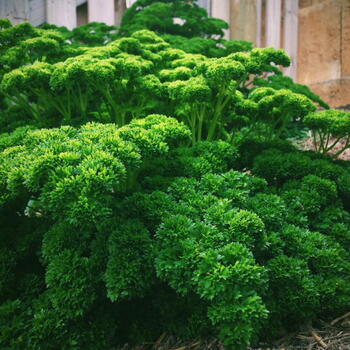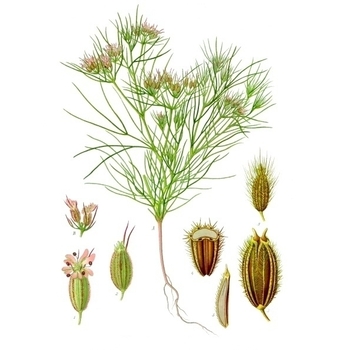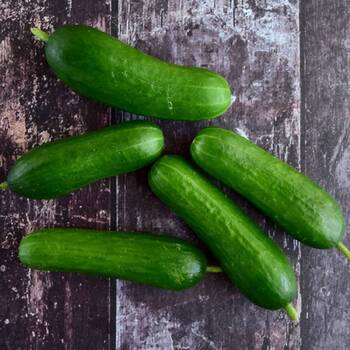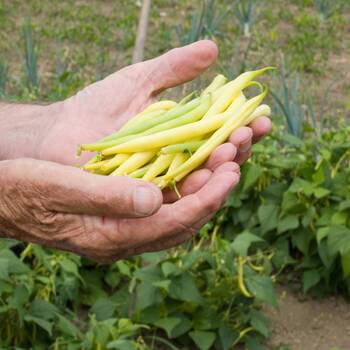Description
Seed Subscription: Vegetable, Cool Climate, Autumn 2024
Subscriptions are an excellent way to explore new seed varieties without having to spend time choosing the seeds yourself, and are perfect for busy gardeners, delivering seeds and all the information you need to plant them directly to your letterbox.
Each season we’ll choose a selection of seed varieties tailored to your climate, and send you the seeds plus a colour information sheet with photos, tips and sowing information - all you need to do is plant!
You are currently viewing a single season of seeds which can be purchased individually. To subscribe to a years worth of seeds click here.
Seeds included in this subscription:
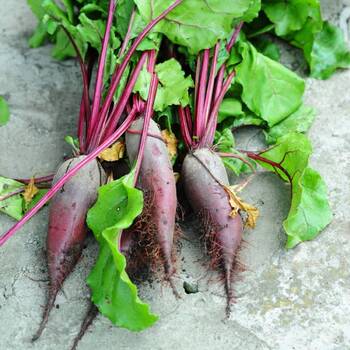
Beetroot- Cylindra
Cylindrical roots, 20cm by 5cm, with smooth dark red skin and interior. Sweet, easy to peel, ideal for slicing and pickling. Plant has small red/green leaves. Bolt resistant, space-saving as it can be planted closely.
Sow direct, 15mm. Germination 5-10 days @ 10-30°C.Biennial (usually grown as an annual). Rows 50cm, Spacing 8cm. 50-70 days.
Best months in Cool Climates: JAN FEB MAR APR SEP OCT NOV DEC (Click for full sowing chart, grow guide and more)
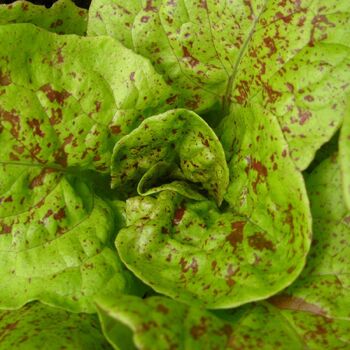
Lettuce- Speckled
A hybrid of looseleaf and romaine, used as a recurring looseleaf crop. Large green leaves with burgundy speckles. A Dutch heirloom variety, now in Australia via Canada and USA. Sweet flavour, ideal for salads.
Sow direct or raise seedlings, 3mm. Germination 7-14 days @ Aug-23°C.Annual. Rows 50cm, Spacing 30cm. 40-65 days.
Best months in Cool Climates: JAN FEB MAR APR MAY SEP OCT NOV DEC (Click for full sowing chart, grow guide and more)
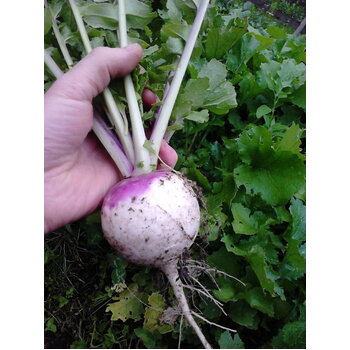
Turnip- Purple Top White Globe
Large globe shaped roots; white with purple tops. Sweet and mild flavour. Can be eaten raw or cooked. Good in salads, stews, soups and as a cooked vegetable. Very popular variety.
Sow direct, 10mm. Germination 5-10 days @ 7-25°C.Biennial (usually grown as an annual). Rows 40cm, Spacing 12cm. 45-70 days.
Best months in Cool Climates: JAN FEB MAR APR MAY SEP OCT NOV DEC (Click for full sowing chart, grow guide and more)
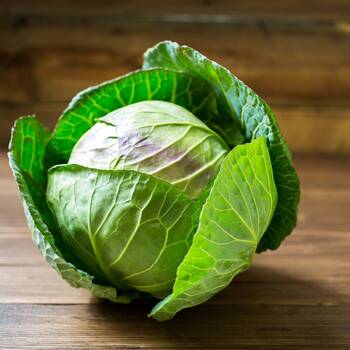
Cabbage- Mini
Small quick growing heads to 1.2kg. Very popular variety for gardeners with limited space. Good space saving variety. Slow bolting. Crisp green leaves with sweet flavour. Good cooked or raw in salads.
Sow direct or raise seedlings, 5mm. Germination 4-10 days @ 18-24°C.Biennial (usually grown as an annual). Rows 40cm, Spacing 25cm. 50-100 days.
Best months in Cool Climates: FEB MAR APR AUG SEP (Click for full sowing chart, grow guide and more)
-
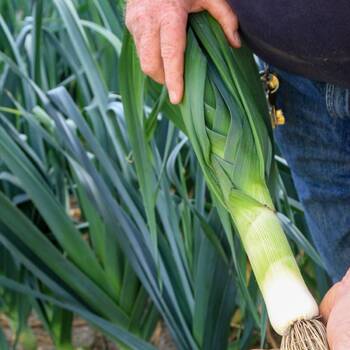
Leek- Elephant
Large leeks that can grow up to 10cm in diameter. Good flavour. Perfect for salads, stews, soups, stir-fries and steamed.
Sow direct or raise seedlings, 5mm. Germination 10-14 days @ 18-23°C.Biennial (usually grown as an annual). Rows 45cm, Spacing 12cm. 100 days.
Best months in Cool Climates: JAN FEB MAR APR SEP OCT NOV DEC (Click for full sowing chart, grow guide and more)
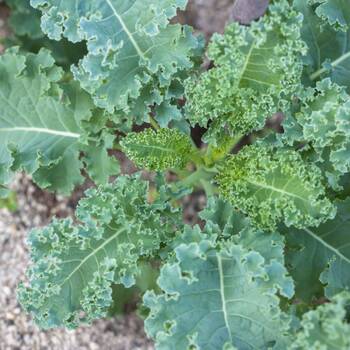
Kale- Siberian
Easy to grow blue/green variety with tender frilled edge leaves and a mildly sweet flavour. Extremely hardy. Compact habit to 40cm tall. Very prolific. Good for baby-leaf. Can be eaten raw or cooked. Kale is also known as Borecole.
Sow direct or raise seedlings, 10mm. Germination 3-7 days @ 8-30°C.Biennial (usually grown as an annual). Rows 40cm, Height 40cm, Spacing 20cm. 55-65 days.
Best months in Cool Climates: JAN FEB MAR APR (Click for full sowing chart, grow guide and more)
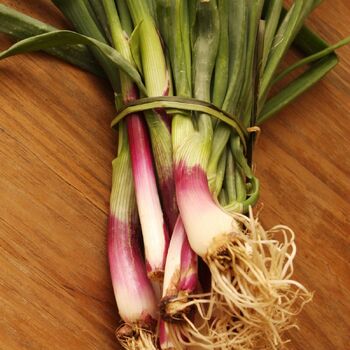
Bunching Onion- Red
A red-stemmed bunching onion suitable to grow year-round. The stems are a striking red colour which doesn't peel away during cleaning. The flavour is subtle and mild. Use in salads, stir-fries or as an edible garnish.
Sow direct or raise seedlings, 5mm. Germination 7-10 days @ 15-25°C.Perennial (usually grown as an annual). Rows 30cm, Spacing 3cm. 60-90 days.
Best months in Cool Climates: MAR APR MAY JUN JUL AUG SEP OCT NOV (Click for full sowing chart, grow guide and more)
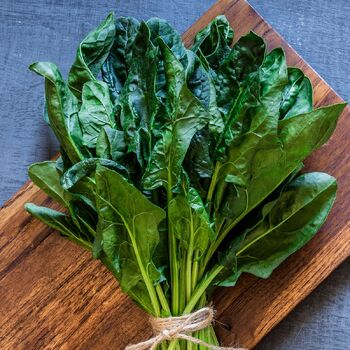
Spinach- Viroflay
A frost-hardy English spinach variety, ideal for autumn, winter, and early spring growth. Fast-growing annual plants with large, dark green, slightly crinkled leaves. Suitable for baby leaf production. Can be eaten raw or cooked. Best in cooler climates.
Sow direct , 10mm. Germination 5-10 days @ 4-25°C.Annual. Rows 40cm, Spacing 30cm. 40 days.
Best months in Cool Climates: FEB MAR APR MAY JUN JUL AUG SEP OCT NOV (Click for full sowing chart, grow guide and more)
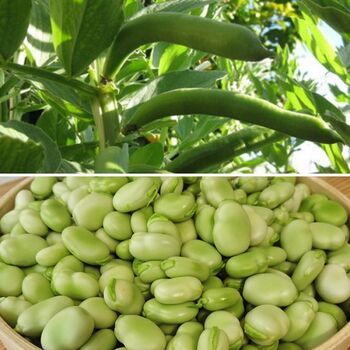
Broad Bean- Aquadulce (Long Pod)
Long 25cm pods containing seeds, known as "beans", used fresh or dried. Young beans are salad ingredients, while old ones are cooked. They have excellent flavour. Also known as "Fava beans".
Sow direct, 50mm. Germination 7-14 days @ 6-24°C.Annual. Rows 100cm, Spacing 30cm. 90 days.
Best months in Cool Climates: MAR APR MAY AUG SEP (Click for full sowing chart, grow guide and more)
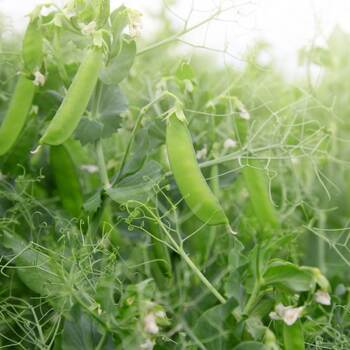
Shelling Pea- Novella
Dwarf bush grows to 75cm, covered in green tendrils instead of leaves. Tendrils cling together, eliminating need for staking. Produces many pods, mostly on the bush's exterior. Peas are sweet, juicy, tender. Long producing.
Sow direct, 20mm. Germination 7-21 days @ 5-25°C.Annual. Rows 50cm, Height 90cm, Spacing 10cm. 70 days.
Best months in Cool Climates: JAN FEB MAR APR MAY JUN JUL AUG SEP OCT (Click for full sowing chart, grow guide and more)
Tips for gardening in autumn:
Harvest harvest harvest! Get the most from your summer gardening efforts by harvesting leafy greens, herbs and fruit before they set seed or the cooling weather stops them producing. Harvesting regularly can extend the cropping season of many vegetables into autumn, boosting your harvest and creating opportunities to preserve excess produce. Frost-tender herbs like basil can be harvested, chopped and frozen to use through winter.
Succession planting: If summer crops are still producing, start your early autumn seeds in seedling trays so they’re ready to plant out once warm-season veggies are removed. Leafy greens can also be succession planted, starting a third of a packet of seeds each month. This approach to planting avoids gluts and gaps in production and is the key to growing vegetables year-round.
End of season clean-up: As summer crops end their productive lives, remove them to the compost bin along with any fallen fruit. Be vigilant about dealing with weeds before they set seed. Tidy and store stakes and trellises that won’t be needed over winter. Leave some stems and seed heads of flowers in situ to provide food and nesting material for birds and insects.
Build soil health: Autumn is a good time to enrich your soil with organic matter so it’s ready for new planting. Spread a layer of compost on the surface before planting seeds or seedlings - there’s no need to dig it in, the worms and other invertebrates in your garden will do that work for you. If growing ‘hungry’ crops including brassicas (broccoli, cabbage, kale or cauliflower), add some aged animal manure or slow-release fertiliser to feed your crops through winter.
Pests and diseases to look out for in autumn:
Cabbage moth and cabbage white butterfly: These white moths and butterflies seem to be in plague proportions in some states this year! They love all brassicas, often laying their eggs on the underside of leaves. The caterpillars match the colour of the leaves they feed on and often lie along the mid-ribs of leaves, making them tricky to see. They’re voracious feeders, creating large holes in leaves and sometimes skeletonising them.
Use netting to exclude butterflies and moths or decoys to deter them, pick the caterpillars off the plants or use an appropriate spray such as Dipel. Planting brassicas a little later in the season, when the temperatures have started to drop, can avoid the problem altogether as cabbage moths and cabbage white butterflies are less active in cool weather.
Powdery mildew: Caused by fungal spores reproducing on the leaves of plants, powdery mildew first looks like white spots on leaves, but affected areas can spread quickly to cover the entire leaf surface with a white powdery coating. While rarely fatal, powdery mildew can reduce yields. Water plants at soil level (not on the leaves) to prevent spores splashing from plant to plant, allow good air flow between plants, remove affected leaves and if necessary spray with an appropriate fungicide or homemade spray.
Bi-carb of soda, also known as baking soda or sodium bicarbonate, is known to be effective at reducing powdery mildew and several other common fungus problems without posing the toxic risks of other treatments. Simply dissolve a teaspoon of the powder into one litre of ordinary water and add a few drops of liquid soap to help the mixture stick to the leaves. Pour the mixture into a regular garden sprayer or mister, shake it thoroughly, and spray liberally over the affected plants.
Product code: SS_VEG_COOL_AUT_2024
Contains
-

1 x Beetroot- Cylindra (Beta vulgaris)
Long cylindrical roots that grow to 20cm by 5cm. Smooth dark red skin with dark red interior; sweet flavour. Easy to peel. The unique shape of this variety makes it ideal for slicing and pickling. Plant has small red/green leaves. Bolt resistant. Saves space in the garden because it can be planted closer together than other varieties.
Life Cycle: Hardy Biennial (usually grown as an annual)
Plant Height:
Position: Full sun, moist well drained soil -

1 x Lettuce- Speckled (Lactuca sativa)
A cross between looseleaf and romaine varieties, commonly used as a cut and come again looseleaf crop. The large green leaves are speckled with splashes of burgundy. A Dutch heirloom variety that's made it's way to Australia via Canada and the USA. Great sweet flavour; good for salads.
Life Cycle: Hardy Annual
Plant Height:
Position: Part or full sun, moist well drained soil -

1 x Turnip- Purple Top White Globe (Brassica rapa)
Large globe shaped roots; white with purple tops. Sweet and mild flavour. Can be eaten raw or cooked. Good in salads, stews, soups and as a cooked vegetable. Very popular variety.
Life Cycle: Hardy Biennial (usually grown as an annual)
Plant Height:
Position: Part or full sun, moist well drained soil -

1 x Cabbage- Mini (Brassica oleracea var. capitata)
Small quick growing heads to 1.2kg. Very popular variety for gardeners with limited space. Good space saving variety. Slow bolting. Crisp green leaves with sweet flavour. Good cooked or raw in salads.
Life Cycle: Hardy Biennial (usually grown as an annual)
Plant Height:
Position: Part or full sun, well drained soil -

1 x Leek- Elephant (Allium porrum)
Large leeks that can grow up to 10cm in diameter. Good flavour. Perfect for salads, stews, soups, stir-fries and steamed.
Life Cycle: Hardy Biennial (usually grown as an annual)
Plant Height:
Position: Full sun, moist soil -

1 x Kale- Siberian (Brassica napus pabularia)
Easy to grow blue/green variety with tender frilled edge leaves and a mildly sweet flavour. Extremely hardy. Compact habit to 40cm tall. Very prolific. Good for baby-leaf. Can be eaten raw or cooked. Kale is also known as Borecole.
Life Cycle: Hardy Biennial (usually grown as an annual)
Plant Height: 40cm
Position: Full sun, well drained soil -

1 x Bunching Onion- Red (Allium fistulosum)
A red-stemmed bunching onion suitable to grow year-round. The stems are a striking red colour which doesn't peel away during cleaning. The flavour is subtle and mild. Use in salads, stir-fries or as an edible garnish.
Bunching onions are also known as 'Welsh onions', often used as 'spring onions' and sometimes incorrectly called 'Shallots'.
Life Cycle: Hardy Perennial (usually grown as an annual)
Plant Height:
Position: Full sun, well drained soil -

1 x Spinach- Viroflay (Spinacia oleracea)
A French heirloom variety of spinach dating from at least the 19th century, with large, deep green slightly crinkled, pointed leaves up to 20cm long. The leaves are tender and low in oxalic acid, with a mild flavour. A vigorous and productive variety that produces early crops in autumn or spring. Harvest after 20-25 days for baby leaf production. Spinach is best suited to cold climates.
Also known as 'Monstrueux de Viroflay' (Monster of Viroflay) after its large leaves, this variety has been recognised in the Eurpean Slow Food Foundation's 'Ark of Taste'.
Life Cycle: Hardy Annual
Plant Height:
Position: Part or full sun, moist soil -

1 x Broad Bean- Aquadulce (Long Pod) (Vicia faba)
Long pods, growing to 25cm, which contain seeds that are commonly referred to as "beans". Beans are used fresh or dried. Young beans can be eaten raw in salads, old beans are cooked as a vegetable. Excellent flavour. Broad beans are also known as "Fava beans".
Life Cycle: Hardy Annual
Plant Height:
Position: Part or full sun, moist soil -

1 x Shelling Pea- Novella (Pisum sativum)
Dwarf (bush) growing to 75cm. Plants are unique in that they produce very few leaves but instead are covered in green tendrils. Tendrils cling together making staking unnecessary. Plants produce large quantities of pods that occur mostly on the outside of the bush. Peas are very sweet, juicy and tender in texture. Long producing
Life Cycle: Hardy Annual
Plant Height: 90cm
Position: Full sun, moist well drained soil
Shipping
We deliver Australia wide.
All orders are dispatched from our warehouse in Knoxfield, Victoria, Australia.
We do not deliver overseas.
Shipping cost is calculated using all the items in your shopping cart and your delivery postcode. The table below outlines the delivery options and costs.
Order dispatch time is currently 1-3 business days plus delivery time.
Please note we are unable to guarantee specific delivery dates or delivery timeframes, all delivery times are estimates only.
| Order contains: | Delivery options: | Delivery cost per order | |
|---|---|---|---|
| VIC, NSW, ACT, QLD, TAS, SA, NT | WA | ||
| Small seed packets ONLY - | Economy Delivery | $3.00 or FREE on orders over $25 | $5 |
| Parcel Delivery | Capped rate of $8.99 | ||
| Express Delivery | $15.00 | ||
|
BULK seed, garden supplies, tools, or accessories - |
Parcel Delivery |
Capped rate of $8.99 |
|
|
Express Delivery |
Starting from $15.00 (Calculated by weight) |
||
| Live Plants - | Live plants | Capped rate of $10.00 | |
*All orders sent to Western Australia are subject to mandatory inspection and fees by Quarantine WA. These fees are included in all shipping costs above.
**We will replace all orders that are lost or damaged in transit however we will not replace or refund orders simply because they were delivered later than estimated. Full details here.
Ratings & Reviews
Be The First To Review This Product!
Help other The Seed Collection Pty Ltd users shop smarter by writing reviews for products you have purchased.

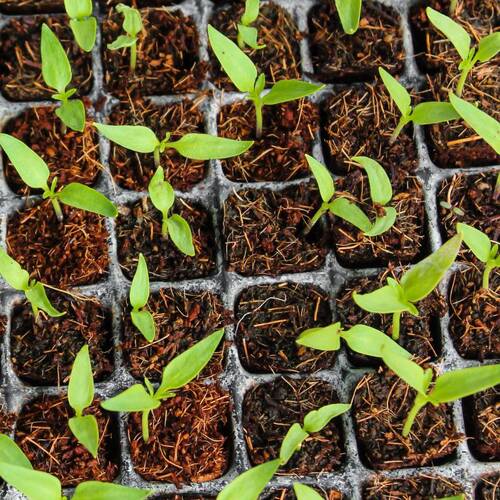


.png)



